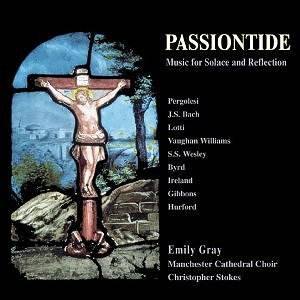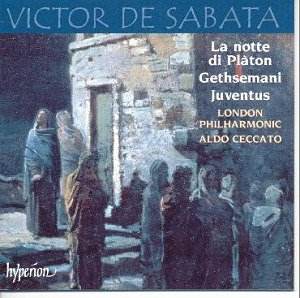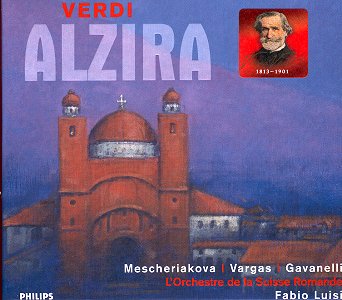 Composer: Various
Composer: Various
Works: Mendelssohn: Hear my Prayer; Vaughan Williams: O Taste and See; Peter Hurford: Litany to the Holy Spirit; S. S. Wesley: Wash me thoroughly; Pergolesi: Stabat Mater (4 extracts); Byrd: Civitas sancti tui; Bach: O sacred head sore wounded; Bach: Bist di bei mir; Casals: O vos omnes; Lotti: Crucifixus; Richard Dering: O bone Jesu; Gibbons: Drop, drop, slow tears; Ireland: Ex ore innocentium; Maurice Greene: Lord, let me know mine end; Miller: When I survey the wondrous cross
Performers: Emily Gray, Claire Buckley (sopranos); Jeffrey Makinson (organ); Manchester Cathedral Choir; Christopher Stokes (conductor)
Recording: January/February 2002, Manchester Cathedral
Label: NAXOS
The latest offering from Naxos, “Passiontide – Music for Solace and Reflection,” presents a compilation of sacred works primarily associated with the Easter season. This collection intriguingly juxtaposes the sacred musical heritage of various composers, illustrating the emotional depth and reflective quality that characterizes this repertoire. The pieces span from the Renaissance to the 20th century, showcasing not only the continuity of choral tradition but also the distinct stylistic shifts that define these eras.
Under the direction of Christopher Stokes, the Manchester Cathedral Choir delivers a solid performance that, while commendable in intonation and ensemble, occasionally reveals limitations in tonal warmth and expressiveness. The motet “Hear my Prayer” by Mendelssohn sets the tone for the album, featuring the well-known solo “O for the wings of a dove.” Emily Gray’s interpretation shines with a purity of tone and clear diction, yet at times lacks the emotional fervor that such a plea for transcendence demands. While the choir exhibits commendable unanimity in attack, there is a noticeable absence of the nuanced shading that elevates this work beyond mere execution.
The juxtaposition of Vaughan Williams’ “O Taste and See” following Mendelssohn’s piece highlights the stylistic transition from the Romantic to the early 20th century. The performance benefits from a delicate organ introduction that prepares the listener for the choral textures that follow. However, the youthful trebles struggle to maintain the same level of purity in tone when taking over from Gray, revealing a disparity in vocal maturity that detracts from the overall impact. This tension between individual brilliance and collective sound is particularly evident in Lotti’s “Crucifixus,” where the organ accompaniment, while functional, lacks the depth that string instruments would have provided.
Emily Gray’s artistry is one of the album’s highlights, and her partnership with Claire Buckley in several selections, including the Pergolesi extracts, deserves special mention. Their voices blend beautifully, yet there is a tendency towards restraint that occasionally stifles the emotional expressiveness inherent in Pergolesi’s poignant writing. The lack of a more dynamic interpretation can be felt throughout the recording, as the choir seems to shy away from the fervent drama that these works can evoke.
The recording quality is generally satisfactory, capturing the acoustic resonance of Manchester Cathedral, although it occasionally fails to convey the full richness of the choral sound. The engineering choices would benefit from a more balanced foreground-background relationship, allowing the individual voices to emerge without overshadowing the ensemble. Compared to competing recordings of similar works, there’s a notable absence of the vibrancy and emotional immediacy that some of the finest choirs achieve, which may leave some listeners yearning for a more compelling experience.
This collection serves as a reflective snapshot of a choir grappling with the profound emotional landscape of Passiontide music. While it offers valuable exposure to the promising talents of Emily Gray and Claire Buckley, as well as the commendable efforts of the Manchester Cathedral Choir, the overall experience is tempered by moments of technical inconsistency and interpretive restraint. Those seeking a representative sampling of this sacred repertoire may find it engaging, yet the discerning listener might be inclined to explore other recordings which offer a richer tapestry of sound and expression.



